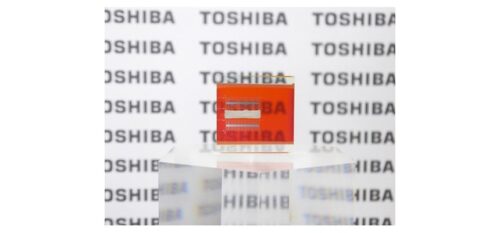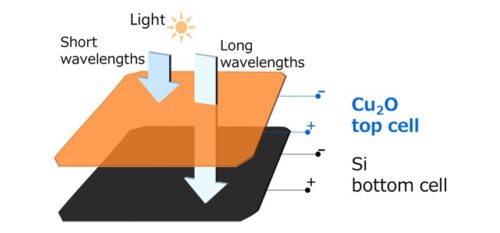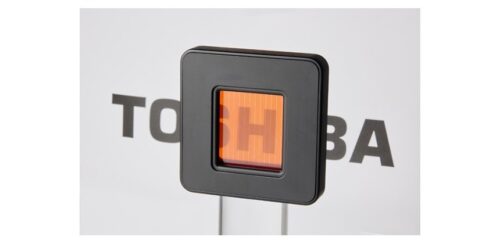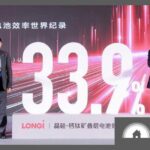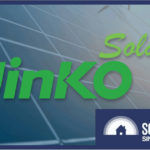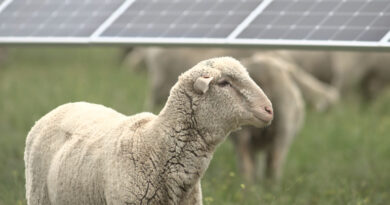Toshiba tests transparent solar cell layered on silicon cell for 9.5% efficiency
Researchers at Toshiba in Japan have reported an advancement in output and reliability with its layered transparent solar cell/silicon solar cell prototype.
The researchers have reported a transparent cuprous oxide (Cu2O) solar cell with a conversion efficiency of 9.5%, the highest level yet achieved for a Cu2O cell. This was realized by enlarging its predecessor, announced in December 2021, and points to the potential for mass production. The new cell is expected to provide a boost for the development of EV that do not require plug-in charging, and to advance other mobility applications, such as high-altitude platform stations, telecom platforms in the stratosphere.
Tandem cells position a solar cell over a standard silicon cell. The cells generate power at different wavelengths, raising areal output, and have great potential to boost the efficiency of solar modules. In addition to Toshiba’s transparent Cu2O cell, work is being done on two other tandem cell technologies: fabrication with gallium arsenide (GaAs) or other III-V materials; and perovskite crystal thin-films. Production costs for the former range from several hundred- to several thousand-times the cost of a single silicon cell, severely restricting application. The latter cannot yet deliver the necessary reliability and guaranteed output for the 20-years-and-more life of a silicon cell.
Toshiba’s R&D focuses on the advantages of transparent Cu2O cells: fabrication with naturally abundant materials cuts costs; a hard and strong, and moisture resistant material, all guarantees of reliability; and light transmittance qualities that open the way to high level power generation efficiency.
Toshiba’s painstaking efforts are now bearing fruit. In a research project supported by Japan’s New Energy and Industry Technology Development Organization (NEDO), researchers have pushed the conversion efficiency of the Cu2O cell to 9.5%, a full 1.1% over the 8.4% reported last year. It was achieved by enlarging the cell and suppressing carrier recombination in the edge of Cu2O generation layer, which degrades generation efficiency.
“We found that a larger cell size effectively suppresses photocarrier recombination,” explains Kazushige Yamamoto, a Fellow at Toshiba’s Corporate Research & Development Center, and leader of the research team. “Increasing the power generation area from the previous 3x3mm2 to 10x3mm2 produced a relative reduction in recombination in the edge of cell, and the resulting increase in photocurrent pushed the efficiency to 9.5%.”
Toshiba has estimated that positioning the new Cu2O solar cell over a 25% efficient silicon cell realizes a Cu2O-Si tandem cell with a 28.5% efficiency — notably surpassing 26.7%, the highest reported efficiency for any standard silicon cell, and close to 29.1%, the highest reported efficiency for any GaAs cell.
Under test criteria defined by NEDO, Toshiba found that a one-time charge enables the current Cu2O-Si tandem cell to power an electric vehicle for 37 km, and further improvements in solar cells toward the theoretical maximum efficiency of 42.3% are expected to extend the range to a distance approaching 55 km. These are both recognized as practical distances for short trips without recharging, and would reduce charging frequency for longer trip.
Toshiba targets a practical Cu2O-Si tandem cell with a 10% efficient Cu2O cell and an overall efficiency of 30%, and the new cell records solid progress to that goal. Looking to mass production, the company is working to enlarge cell size, and has made a prototype with a power generation area of 40mm2 and an efficiency around 8%. The efficiency falloff in the larger cell is due to a less uniform layer and Toshiba continues to refine thin film deposition technology for uniform deposition over a larger area.
News item from Toshiba
<!–
–>
Original Source: https://www.solarpowerworldonline.com/2022/09/toshiba-tests-transparent-solar-cell-layered-on-silicon-cell-for-9-5-efficiency/


